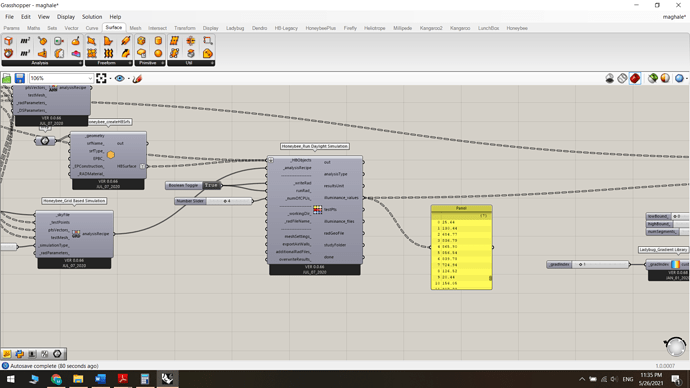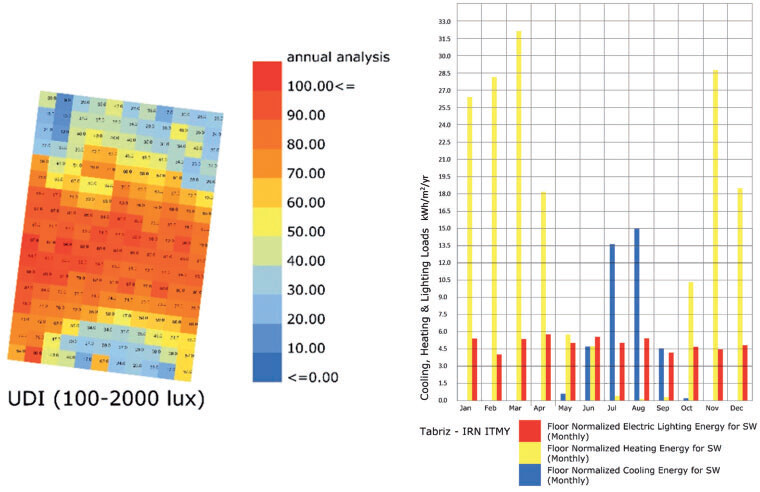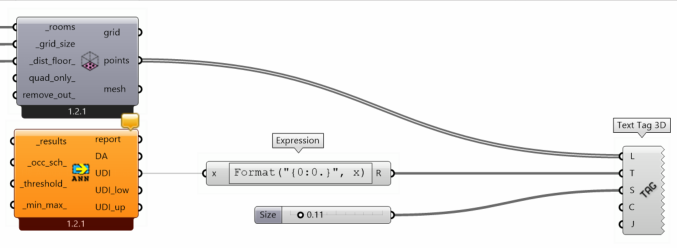maghale.gh (665.0 KB) Hello everybody, I ran a simulation in order to calculate the illuminance levels in a building with 4 floors. as you can see in output there are 8 surfaces which are defined . The question is that how can I get the results (in number not as a graphic ) surface by surface? Thanks
Hello,
I am not sure this is what you are looking for but if you go in C:\ladybug you should have a folder named after the simulation you have run (I see that you have set no name as input for RadFileName so the system has probably assigned a name by default) in which you can find the .ill files of your analysis that you can open as CSV for post-processing
Hope that helps,
Matteo
I’m not sure what you are asking. I see that the output is already grafted, meaning that you have the result values per surface already.
-A.
Dear Abraham,to be honest , I am going to write a paper about optimizing light-well’s dimension. i just want to calculate the illuminance level. do I have to show the average lux of all my test points? or should I make bigger grid size as much as my area? whats general? thank ya anyway
You can think of using the Da, cDA and/or UDI results for that purpose. But you should know better what and why are you doing and what you need in order to prove your point. The What seems to be clear. The Why a little less.
-A.
Abraham if I want to label UDI result on every grids which I have generated what shoul i do?
like this picture:
thanks Abraham, can u tell me how can i have just 2 digits after decimals by expression?
Format("{0:0.00}", x)
Those are the sort of things you can search over the general rhino discourse.
–A.
Hello Dear Abraham
I am working on a project and I have to calculate illuminance levels annually. I have no idea what what component I should use for that. Is it possible anyway?
I dont want to use any dynamic or static metrics.
adel.gh (509.2 KB)
Didn’t check your file, but … I don’t believe that annual illuminance levels make sense. For useful illuminance evaluations you have UDI, sDA and more that can give you a better picture of the performance you are looking for.
-A.


